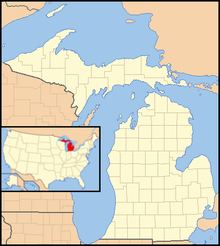

Hey guys, here we are going to see about the tunnel which was first built in US. The St. Clair Tunnel is the name for two separate rail tunnels which were built under the St. Clair River between Sarnia, Ontario and Port Huron, Michigan. It was the first full-size sub aqueous tunnel built in North America. (By full-size it is meant that it allowed a railroad to run through it.)
The St. Clair Tunnel Company opened this first tunnel in 1891. The company was a subsidiary of the Grand Trunk Railway (GTR), which used the new route to connect with its subsidiary Grand Trunk Western Railroad (GTWR). Before the tunnel's construction, the GTR was forced to use time-consuming rail ferries to transfer cargo.
The tunnel was an engineering marvel in its day, achieved through the development of original techniques for excavating in a compressed air environment. Freight trains used the tunnel initially with the first passenger trains using it in 1892.
The tunnel measured 6,025 feet (1,836 m) from portal to portal. The actual width of the St. Clair River at this crossing is only 2,290 feet (698 m). The tube had a diameter of 19 feet, 10 inches (6.05 m) and hosted a single standard gauge track. It was built at a cost of $2.7 million.
Steam locomotives were used in the early years to pull trains through the tunnel, however concerns about the potential dangers of suffocation should a train stall in the tunnel led to the installation of catenary wires for electric-powered locomotives by 1907. The first use of electric locomotives through the tunnel in regular service occurred on May 17, 1908.
After a long years of service this tunnel was designated a Civil Engineering Landmark by both the Canadian and the American Societies of Civil Engineers (CSCE and ASCE) in 1991 and also it was declared a U.S. National Historic Landmark in 1993.
About the tunnel…
Official name: Paul M. Tellier Tunnel
Carries: Rail lines
Crosses: St. Clair River
Local Port: Huron, Michigan and Sarnia, Ontario
Maintained by: Canadian National Railway
Total length: 6,025 feet (1,836 m) (first tunnel)
Opening date: 1891
Destruction date: 1994
Location: St. Clair River between Port Huron, Michigan and Sarnia, Ontario
Coordinates: 42°57′30″N 82°24′38″W / 42.95833, -82.
Built/Founded: 1889
Architect: Beach,Alfred; Hobson,Joseph
Architectural style(s): Other
Designated as NHL: April 19, 1993[1]
Added to NRHP: October 15, 1970[2]
NRHP Reference#: 70000684
Governing body: Private














